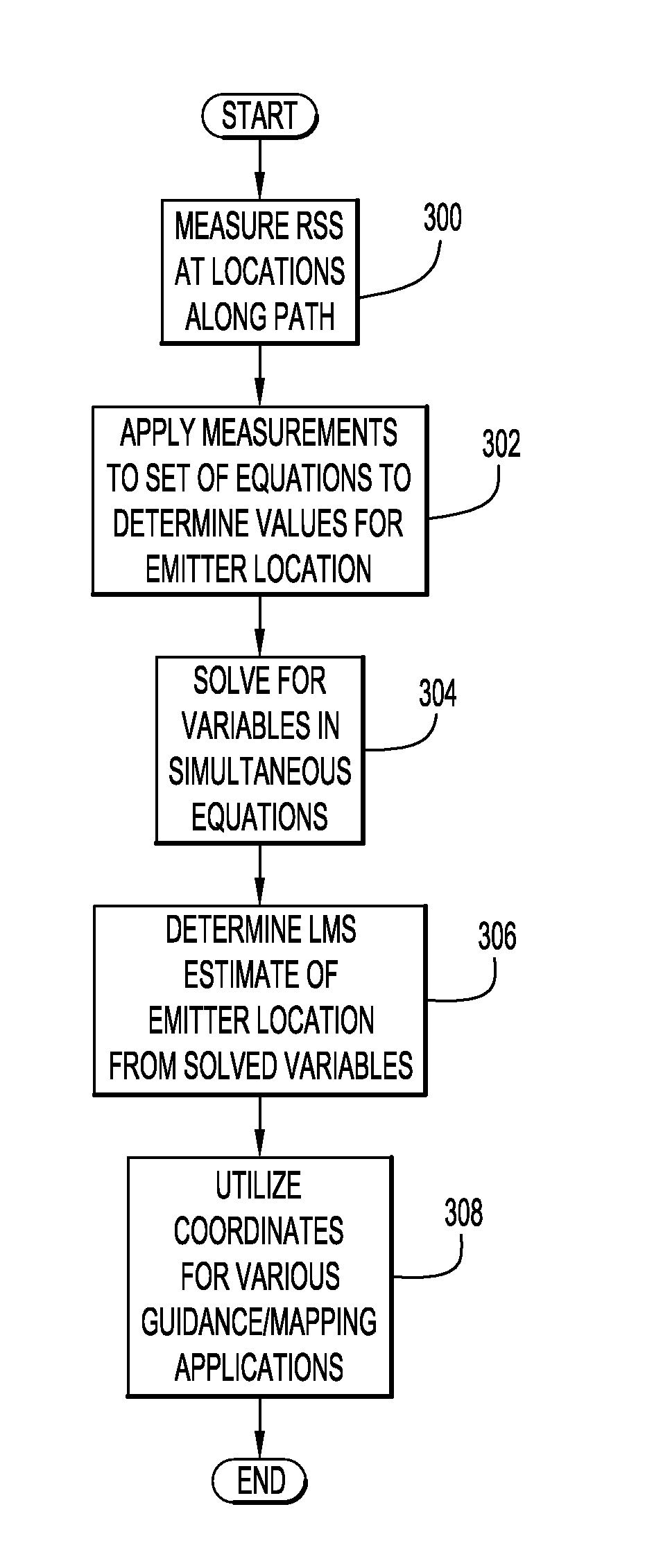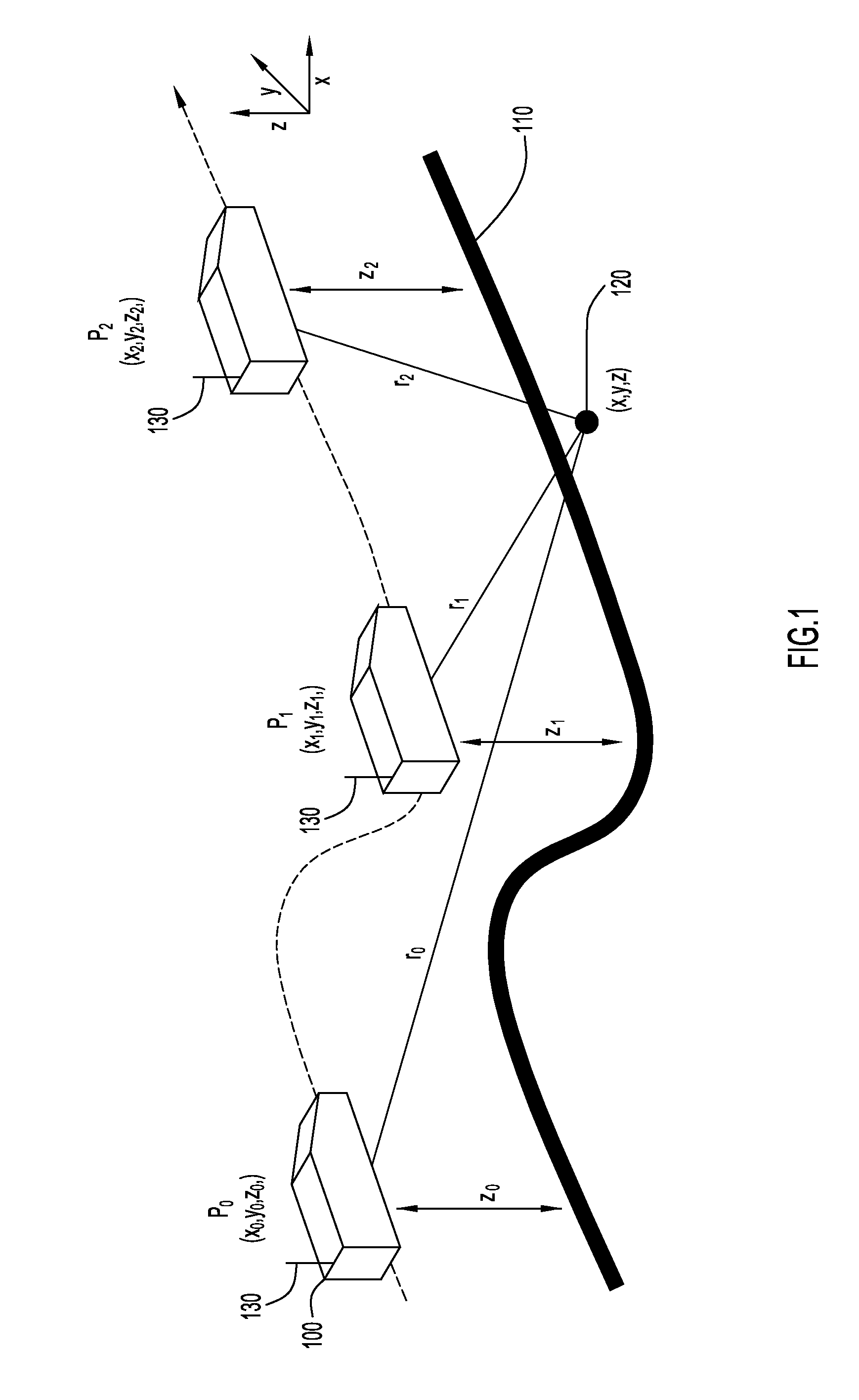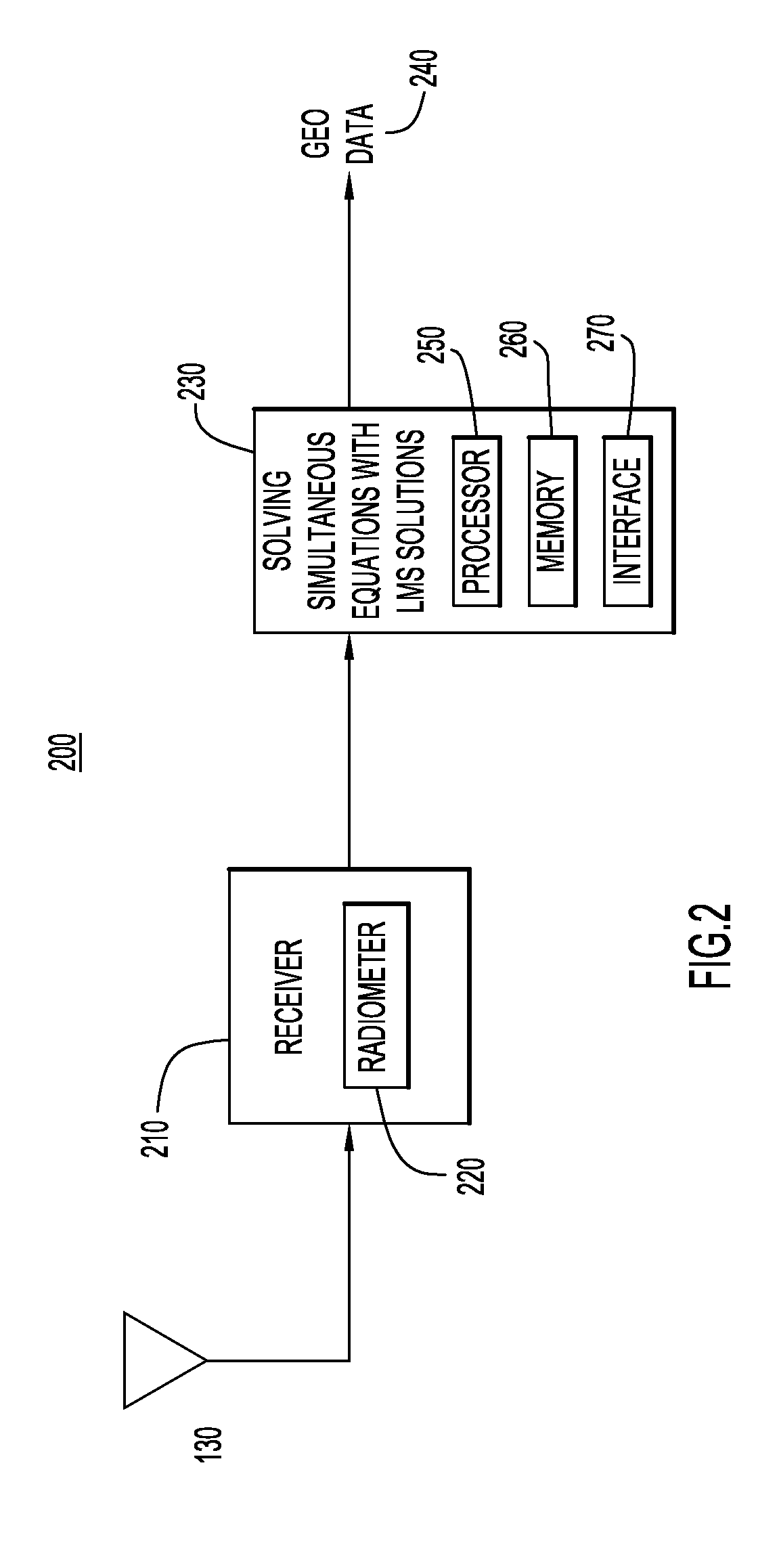System and Method for Three-Dimensional Geolocation of Emitters Based on Energy Measurements
a technology of energy measurement and system, applied in the direction of direction finders, instruments, measurement devices, etc., can solve the problems of not being able to use the technique in applications, requiring a large number of real-time measurements and/or terrain modeling, and not being very accura
- Summary
- Abstract
- Description
- Claims
- Application Information
AI Technical Summary
Benefits of technology
Problems solved by technology
Method used
Image
Examples
Embodiment Construction
[0014]Embodiments of the present invention pertain to a three-dimensional (3-D) energy-based geolocation technique that obtains reliable geolocation estimates of a radio frequency (RF) emitter based on energy or received signal strength (RSS) of transmitted signals. The geolocation of a radio frequency (RF) emitter is a critical need for many applications. The technique of present invention embodiments may be employed with unmanned air vehicles (UAV) that are usually small, utilized for low altitudes, and employ typical guidance technologies for operation (e.g., following pre-planned or manually provided paths or waypoints). These types of vehicles are well suited for enabling three-dimensional (3-D) geolocation of radio frequency (RF) emitters of interest.
[0015]An example environment for determining the geolocation of a radio frequency (RF) emitter in a three-dimensional space is illustrated in FIG. 1. Specifically, the environment includes a radio frequency (RF) emitter 120, and a...
PUM
 Login to View More
Login to View More Abstract
Description
Claims
Application Information
 Login to View More
Login to View More - R&D
- Intellectual Property
- Life Sciences
- Materials
- Tech Scout
- Unparalleled Data Quality
- Higher Quality Content
- 60% Fewer Hallucinations
Browse by: Latest US Patents, China's latest patents, Technical Efficacy Thesaurus, Application Domain, Technology Topic, Popular Technical Reports.
© 2025 PatSnap. All rights reserved.Legal|Privacy policy|Modern Slavery Act Transparency Statement|Sitemap|About US| Contact US: help@patsnap.com



